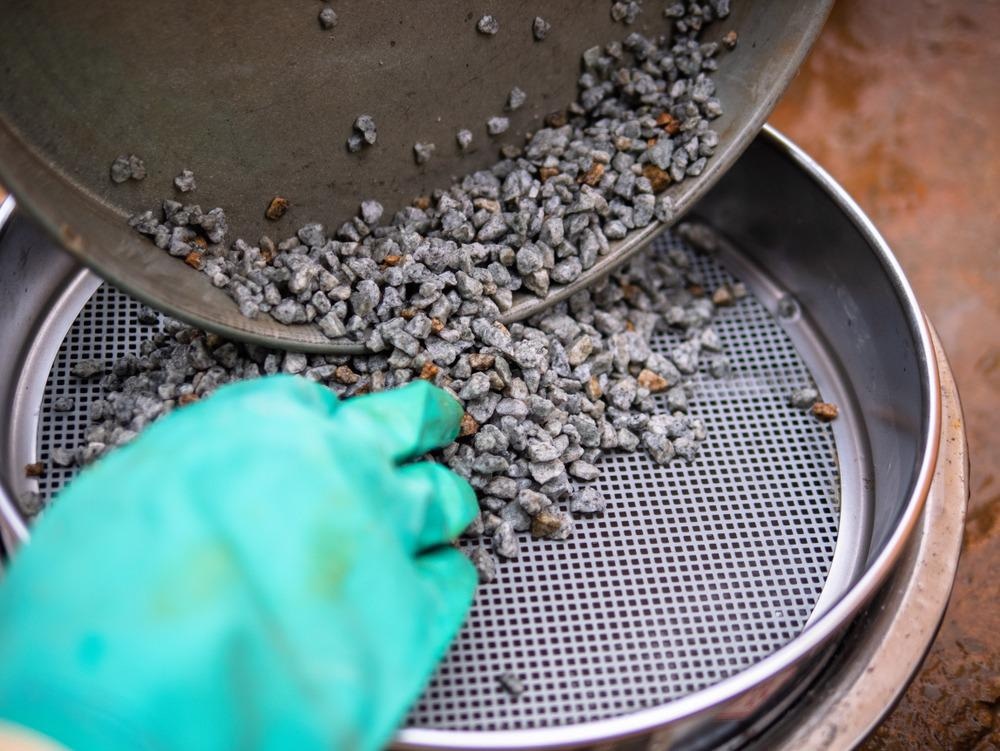
Image Credit: Tohsurat/Shutterstock.com
Particle size analysis is vital to a wide range of industries, particularly those that rely on quality control. Almost any industry that mills or grinds products utilizes particle size analysis to determine the quality and safety of the final product. Here, we discuss its importance in the main industries that rely on particle size analysis: pharmaceuticals, construction, paint and coatings, food and drink, and aerosols.
What Industries Rely on Particle Size Analysis?
Particle size analysis is a technique used to characterize how particles are distributed in a sample. The method can be applied to samples of any state (solid, liquid, or gas). In each industry, the protocol of particle size analysis may be slightly different, with different techniques applied to measure particle size. While some of these methods can be applied to a wide range of samples, others have been developed with a specific sample type in mind.
Particle size analysis is mostly used for quality control purposes to ensure that the final product meets certain requirements and that it is safe for use. Pharmaceuticals, building materials, paints and coatings, food and drink, and aerosols are all sectors that have adopted particle size analysis as a method of quality control.
Particle Size Analysis in the Pharmaceutical Industry
The measurement of particle size is vital to ensuring product bioavailability, efficacy, and shelf life since particle size influences surface area and porosity. When developing new pharmaceutical drugs, particle size analysis is one of the most important parameters to assess.
A therapeutic’s particle size directly influences its absorption behavior, bioavailability, content uniformity, dissolution, and flowability. All these factors impact the product’s effectiveness and are therefore important to assess during therapeutic development as well as quality control during manufacture.
Particle Size Analysis in Building Materials
In the construction industry, building materials are required for a variety of project types, including carpentry, insulation, plumbing, roofing, and structural reinforcement. All these areas require building materials with different properties, and the particle size and particle shape of the raw material used to produce the final building materials is key to determining these factors. Therefore, when producing building materials, particle size analysis must be included as a vital step to ensure that the materials created are safe and fit for purpose.
Materials produced with particles that are too large can lead to a multitude of problems, including a reduction in the quality of the final product, alterations to the look and feel of the final product that deviate from the specifications, changes to the process parameters of the final product, and the blockage of production sieves.
Undersized particles can also cause problems. They can change the look and feel of the final product, as well as create high levels of dust in the workplace, cause filter blockage issues, and cause changes to the flow behavior and other process parameters.
Particle Size Analysis in Paints and Coatings
The bulk properties of paint and coating pigment dispersions are impacted by particle size. In addition, the optical properties of a paint or coating, such as those that determine the finish of the product, including its opacity, tinting strength, undertone, gloss/film appearance, and weather resistance, are also influenced by particle size.
This makes particle size analysis vital to ensuring product quality in the paint and coatings industry. Without this technique, manufacturers would not be certain that the finished product met the requirements of the consumer in terms of product finish and handling.
Particle Size Analysis in Food and Drink
Particle size analysis is used for quality control and product development of many food items, such as coffee, chocolate, mayonnaise, milk, sugar, and flour. Food storage and stability are heavily reliant on particle size. Powdered food products, such as flour, can undergo the process of caking, and emulsions, such as milk, can have stability issues due to irregularities in particle size.
The organoleptic properties of food, such as those that influence the texture and mouthfeel of food items, are also heavily dependent on particle size. The human tongue can detect particles as small as just a few microns in diameter. Therefore, adjusting particle size can have a significant impact on the experience of consuming the final food product.
Emulsion-based drinks are also impacted by particle size. Their flavor and color can be controlled by adjusting this factor. Liquids such as cream liqueur and flavor emulsion can be characterized based on particle size, which can be optimized to determine the product’s shelf life and the likeliness that the product will develop sugar crystals, which can impact the product’s quality.
Particle Size Analysis in Aerosols
Particle size analysis is crucial when producing aerosols. The best example of this is the manufacture of medical inhalers. To ensure the safety and efficacy of these products, which are based on the dispersion of the aerosol particles, particle size analysis is conducted to determine that the product is safe for clinical use.
References and Further Reading
Mitchell, J. and Nagel, M., 2004. Particle Size Analysis of Aerosols from Medicinal Inhalers. KONA Powder and Particle Journal, 22(0), pp.32-65. https://www.jstage.jst.go.jp/article/kona/22/0/22_2004010/_article
Shekunov, B., Chattopadhyay, P., Tong, H. and Chow, A., 2006. Particle Size Analysis in Pharmaceutics: Principles, Methods and Applications. Pharmaceutical Research, 24(2), pp.203-227. https://link.springer.com/article/10.1007/s11095-006-9146-7
Tiarks, F., Frechen, T., Kirsch, S., Leuninger, J., Melan, M., Pfau, A., Richter, F., Schuler, B. and Zhao, C., 2003. Formulation effects on the distribution of pigment particles in paints. Progress in Organic Coatings, 48(2-4), pp.140-152. https://www.researchgate.net/publication/222326067_Formulation_effects_on_the_distribution_of_pigment_particles_in_paints
Disclaimer: The views expressed here are those of the author expressed in their private capacity and do not necessarily represent the views of AZoM.com Limited T/A AZoNetwork the owner and operator of this website. This disclaimer forms part of the Terms and conditions of use of this website.